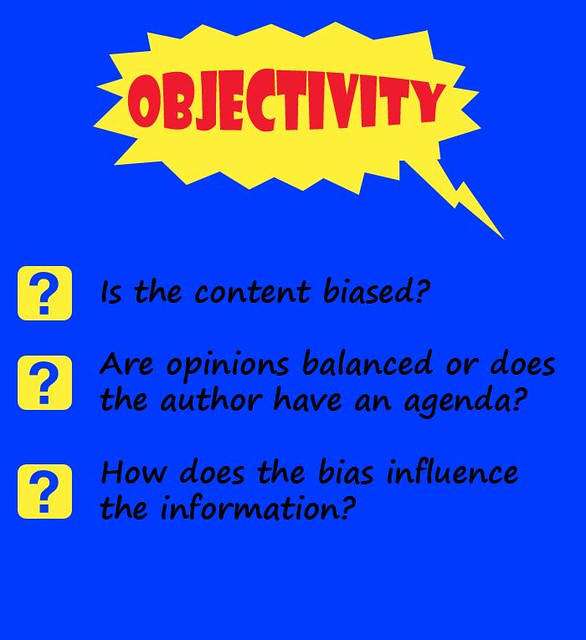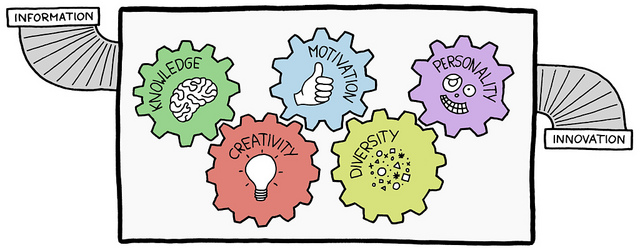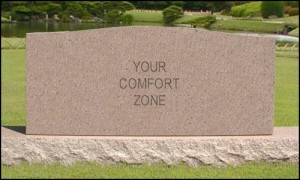|
|
|
Wednesday, May 1st, 2019

Continuing from yesterday.
Two of the hardest things you need to do to start acquiring wisdom are
- Investing the time, energy and discomfort in getting to actually know yourself — the real you that may only exist in private at 3 AM and that you rarely if ever talk about.
- Choosing (yes, it’s your choice) to reduce your intake of social media or not, you do need to reduce your reliance on it. At the same time you want to strengthen your objectivity
The absolute requirement of the first is to get to know your opinions, biases, prejudices, etc., sans outside influences. You can’t be objective until you know your subjective viewpoint.
That said, today’s world of distractions, intentionally addictive social media, and extended working hours doesn’t lend itself to self-reflection. That means you need to consciously set aside the time to do it and then follow through — same as any get healthy program.
Developing your objectivity requires you to do some very uncomfortable things, such as reading/listening to material outside your worldview, belief system and comfort zone.
Then researching sources recognized as objective to determine the validity of the information.
You should know that the odds are against your accomplishing this.
Research has shown that no matter how much incontestable proof people rarely change their mind.
But perhaps you can be one of the exceptions.
Image credit: Katherine McGittigan
Posted in Personal Growth | 1 Comment »
Tuesday, April 9th, 2019

Yesterday focused on the constant opportunities that surround us as we move through our lives.
But in order to take advantage of them you need to be willing to move outside your comfort zone.
It’s always easier to coast than it is to climb.
In the same way, it’s easier to play it safe with what you already know than to put yourself in the position of being uncomfortable and having to learn new stuff — and possibly look foolish or fail
So what if you do?
The world won’t stop turning, nor will a lightening bolt materialize and strike you. Oh. And the sky won’t fall.
I promise.
What will happen is you’ll learn, grow, get braver, and your interests will expand.
And practically a guarantee that you’ll go further in life than you would have otherwise.
Opportunities.
Grab ‘em while they’re hot.
Image credit: Jennifer C.
Posted in Ducks In A Row, Personal Growth | No Comments »
Thursday, May 24th, 2018

I’m here this week in Dallas, Texas for our company’s sales kickoff. Most of my company is remote and this also gives us an opportunity to meet in person for some quality bonding time.
I have found that these face-time meetings can create tremendous value as a company and as an individual rep. As companies continue to find talent from across the nation and world it becomes obvious that some time spent together can make a lasting impact.
Since we’re in Texas there are a few things that we must experience and do as a team. BBQ is top of the list. One of the executives within my company has a ranch in Texas and we had an excellent BBQ on the grounds of his property.
Basically, every cliché you can think of took place. Horses, cowboy hats, country music and great BBQ.
One takeaway that I learned during the evening was this, folks that travel for work get tired of restaurants. When we did the BBQ it was a moment for people to relax, spend time actually talking and not worrying about if we have tipped the server enough to stay longer.
It’s a good lesson to keep in mind when visiting clients as well. Give them some space to roam and you never know what you may find out.
Texas being Texas the week is not complete without going to a gun range. Now I realize that the gun debate is raging right now and even this week we have had another terrible school shooting. However, the experience at this range was able to cross political divides for at least one day. We had folks that are very experienced with shooting and those who have never touched a gun in their lives.
The feedback from the group was they were very happy to have had the experience to learn about gun safety from professionals and build a little confidence in what the weapon can do.
I am of the belief that weapons require respect and I carried that lesson into the events of the day. We conducted this event with clients and many of them walked away with a smile on their face after firing a gun for the first time. My takeaway from this is to get someone out of their comfort zone and you may just see who they really are.
So I went into this week with no expectations but learned three things:
Proximity matters. Give people space to roam. Create opportunities to expand your comfort zone.
They all help in business and in life.
Image credit: bryan…
Posted in Personal Growth, Ryan's Journal | No Comments »
Monday, March 26th, 2018

Poking through 11+ years of posts I find information that’s as useful now as when it was written.
Golden Oldies is a collection of the most relevant and timeless posts during that time.
People Like Me is probably one of the most important posts I ever wrote. Additionally, 12 years ago I said,
A workforce that homogenizes along any lines is a workforce that will either miss, ignore, or be unable to reach a part of their market.
And in 2007 I wrote,
Keep in mind that true diversity includes MAP and mental function, not just race and gender. I’ve known managers whose organizations were mini-UNs with equal numbers of males and females, but they might as well have been cloned from the boss, their thinking was so identical.
I call it “homogenizing,” which is the polar opposite of diversity, which includes race, gender, religion, ethnicity, and MAP. Research has proven that while diversity pays, homogenizing will kill you.
Read other Golden Oldies here.
A CEO (who wants to stay anonymous) called me today and said, “If charm causes bad hires, what causes “wrong hires?” He defined a wrong hire as one where a good person with good skills that seemed to fit the req was hired, but didn’t add the expected strength to the team. So I explained comfort zones and he said, “You should put that in the blog,” so I am.
I first wrote about comfort zones back around 1999 (Hiring in Your Comfort Zone) for msdn (Microsoft Developers Network, where I used to have a column) and the idea hasn’t changed a lot.
Our comfort zone is where we all prefer to do things. People want to spend their time with people like themselves. This isn’t about simple labels, such as race, religion or gender, which are more society’s labels. Our own subjective labels have more to do with schools (Harvard, Stanford, Wharton, etc.), specific professions (not fields), and especially companies (think McKinsey). It’s how we choose a way to connect, because, true or not, MIT grads believe they have more in common with MIT alums than with Cal or Columbia. Doctors hang out with doctors, usually those with the same, or similar, specialty or employer, but rarely with nurses or radiology techs. We like enough knowledge commonality so we don’t feel ignorant, but can still learn. It all boils down to, “people like me (PLM).”
And that maybe fine in our personal life—but not so fine in our professional life, especially not for managers responsible for hiring. The broader the PLM definition the longer it takes to become noticeable, but it’s there if you look for it.
I’ve known the following (often more than one who fits the profile):
- Director of system development who came from a software background, hired hardware engineers with extremely strong software experience, although it wasn’t needed.
- VP of marketing with a Harvard MBA whose team were all “Ivy.”
Think of the articles you are constantly seeing of new CEOs who hire the majority or their team from their previous employer with the express purpose of getting the same mindset. Bob Nardelli, the new CEO of Home Depot is a great example of PLM hiring. And sometimes it works, at least for awhile.
But the long-term cost to companies can be high.
- When the choice is between the best applicant and PLM, PLM usually wins out, slowly lowering the quality of talent.
- PLM homogenizes the staff, reducing diversity of both thinking and thought (methodology and result) and it’s that diversity that supplies strength and creativity.
- PLM can wreak havoc on retention efforts and drive out legacy knowledge.
- PLM hiring can involve just one part of a company or create a ripple effect, e.g. slow product development, which delays delivery, crimping sales and keeping the company from achieving its revenue goals.
Yes, all of this and much more are a product of a PLM mindset.
Image credit: Jurgen Appelo
Posted in Culture, Golden Oldies, Innovation | No Comments »
Monday, November 6th, 2017
It’s amazing to me, but looking back over more than a decade of writing I find posts that still impress, with information that is as useful now as when it was written.
Golden Oldies are a collection of what I consider some of the best posts during that time.
Curation has gotten much worse over the last two years since this was written. Facebook curates your news feed based on your profile and online actions, so you see mostly items — whether real or fake — that are in line with your worldview. Facebook, Google, Amazon, Twitter and most other sites show you “targeted ads” based on the the cornucopia of personal information at their fingertips.
The result is a world that is narrowing and, in doing so, becomes more harrowing.
Read other Golden Oldies here.

Earlier this month I shared a conversation with a founder who believes he can lead only one type of person.
It wasn’t that surprising, because the more things are curated the more we hear from and cleave to people like ourselves.
There’s no question that curation reinforces opinions, while eliminating conflicting ones, narrows people beyond from where they started and acts like fertilizer to unconscious bias and outright bigotry.
But isn’t college supposed to help change that by exposing students to people with different beliefs, experiences, attitudes, etc.?
Several years ago a couple of startups gave the college-bound a way to curate their roommates, so they could be sure not to be exposed to ideas, attitudes or upbringing not in sync with their current thinking.
Mangers have been doing this for decades by thoughtlessly hiring people like themselves, so they can stay within their personal comfort zones.
Now college students are taking the concept much further with the demand for “safe spaces.”
Safe spaces are an expression of the conviction, increasingly prevalent among college students, that their schools should keep them from being “bombarded” by discomfiting or distressing viewpoints. Think of the safe space as the live-action version of the better-known trigger warning, a notice put on top of a syllabus or an assigned reading to alert students to the presence of potentially disturbing material. (…)
Eric Posner, a professor at the University of Chicago Law School commented, “Perhaps overprogrammed children engineered to the specifications of college admissions offices no longer experience the risks and challenges that breed maturity,” But “if college students are children, then they should be protected like children.”
This need for safety and zero-level tolerance for discord makes me wonder what will happen to the current college generations when they venture into the workplace, let alone the rest of the real world.
Image credit: Deb Nystrom
Posted in Culture, Golden Oldies, Personal Growth | No Comments »
Monday, July 20th, 2015

This isn’t the first time bias has been the subject of a post, from attractiveness to the inherent dangers of your comfort zone to Google’s anti-bias training and many others.
The most important thing to learn from all this is that you are biased.
So am I and so is the rest of the human race, no exceptions.
Now neuroscience research is looking at bias and what it takes to disable it within an organization well beyond Google’s training approach, which may not do much good.
Unfortunately, there is very little evidence that educating people about biases does anything to reduce their influence. Human biases occur outside conscious awareness, and thus people are literally unaware of them as they occur. As an individual, you cannot consciously “watch out for biases,” because there will never be anything to see.
First, some basics; what is bias?
Biases are nonconscious drivers — cognitive quirks — that influence how people see the world. They appear to be universal in most of humanity, perhaps hardwired into the brain as part of our genetic or cultural heritage, and they exert their influence outside conscious awareness.
The great problem is that people can’t recognize bias until after the fact — if at all.
If you are highly self-aware you can train yourself to know areas in which you are biased based on historical perspective, which, hopefully, will send up warning flags when you face a similar situation.
But the best solution involves a team effort, whether at work, home or during other pursuits.
How then can the negative effects of bias be overcome? Collectively. Organizations and teams can become aware of bias in ways that individuals cannot. Team-based practices can be redesigned to help identify biases as they emerge, and counteract them on the fly, thus mitigating their effect.
Bias is real and it’s not going to go away because it violates what we want to believe about ourselves.
I highly recommend this article, not just for you, but to share with the various teams in your life.
Flickr image credit: Urko Dorronsoro
Posted in Communication, Culture, Ducks In A Row | 2 Comments »
Monday, April 13th, 2015

Earlier this month I shared a conversation with a founder who believes he can lead only one type of person.
It wasn’t that surprising, because the more things are curated the more we hear from and cleave to people like ourselves.
There’s no question that curation reinforces opinions, while eliminating conflicting ones, narrows people beyond from where they started and acts like fertilizer to unconscious bias and outright bigotry.
But isn’t college supposed to help change that by exposing students to people with different beliefs, experiences, attitudes, etc.?
Several years ago a couple of startups gave the college-bound a way to curate their roommates, so they could be sure not to be exposed to ideas, attitudes or upbringing not in sync with their current thinking.
Mangers have been doing this for decades by thoughtlessly hiring people like themselves, so they can stay within their personal comfort zones.
Now college students are taking the concept much further with the demand for “safe spaces.”
Safe spaces are an expression of the conviction, increasingly prevalent among college students, that their schools should keep them from being “bombarded” by discomfiting or distressing viewpoints. Think of the safe space as the live-action version of the better-known trigger warning, a notice put on top of a syllabus or an assigned reading to alert students to the presence of potentially disturbing material. (…)
Eric Posner, a professor at the University of Chicago Law School commented, “Perhaps overprogrammed children engineered to the specifications of college admissions offices no longer experience the risks and challenges that breed maturity,” But “if college students are children, then they should be protected like children.”
This need for safety and zero-level tolerance for discord makes me wonder what will happen to the current college generations when they venture into the workplace, let alone the rest of the real world.
Image credit: Deb Nystrom
Posted in Culture, Personal Growth | No Comments »
Friday, November 2nd, 2012
A Friday series exploring Startups and the people who make them go. Read all If the Shoe Fits posts here
 Flattery and agreement can be a lethal combination for a CEO, according to research by Sun Hyun Park, James D. Westphal and Ithai Stern. Flattery and agreement can be a lethal combination for a CEO, according to research by Sun Hyun Park, James D. Westphal and Ithai Stern.
“Our theory suggests how high levels of flattery and opinion conformity can increase CEOs’ overconfidence in their strategic judgment and leadership capability, which results in biased strategic decision making,”
In the same vein, John O’Farrell, Andreessen Horowitz, says that founder-CEOs need to be especially careful.
“Hire people who are different from you, and who will have the courage to challenge you when it matters.”
The road to failure hell is paved as much with yes-people, which leads to homophily, as with good intentions.
What you want are those who think differently, but have similar values.
Values are the foundation of your culture, not race, creed, gender, university, sorority/fraternity, fashion brand, etc.
Whatever your culture, by using it as a hiring filter you can get out of your comfort zone and stop hiring people like yourself—who are most likely to become yes-people.
Option Sanity™ avoids ISO flattery.
Come visit Option Sanity for an easy-to-understand, simple-to-implement stock allocation system. It’s so easy a CEO can do it.
Warning.
Do not attempt to use Option Sanity™ without a strong commitment to business planning, financial controls, honesty, ethics, and “doing the right thing.”
Use only as directed.
Users of Option Sanity may experience sudden increases in team cohesion and worker satisfaction. In cases where team productivity, retention and company success is greater than typical, expect media interest and invitations as keynote speaker.
Flickr image credit: HikingArtist
Posted in If the Shoe Fits | 1 Comment »
Friday, September 7th, 2012
 A Friday series exploring Startups and the people who make them go. Read all If the Shoe Fits posts here A Friday series exploring Startups and the people who make them go. Read all If the Shoe Fits posts here
It will come as no surprise that most young people want to work for startups or small biz.
Of those aged 19 to 29 who were surveyed, 47 percent work for companies with less than 100 employees, and 30 percent work for medium sized companies that have between 100 and 1,500 employees.
Or that they aren’t the top preference for larger companies.
Another study found that older, more established companies are less likely to hire younger people than are newer companies.
“Ah ha,” I can hear you thinking, “That proves I’m hiring the right talent.”
Are you sure?
Or does it just prove you are hiring deep within your own comfort zone, as are those in large companies?
Option Sanity™ establishes a new comfort zone.
Come visit Option Sanity for an easy-to-understand, simple-to-implement stock allocation system. It’s so easy a CEO can do it.
Warning.
Do not attempt to use Option Sanity™ without a strong commitment to business planning, financial controls, honesty, ethics, and “doing the right thing.”
Use only as directed.
Users of Option Sanity may experience sudden increases in team cohesion and worker satisfaction. In cases where team productivity, retention and company success is greater than typical, expect media interest and invitations as keynote speaker.
Flickr image credit: HikingArtist
Posted in Hiring, If the Shoe Fits | No Comments »
Thursday, March 22nd, 2012
 Part of the allure of starting a company is the idea of being your own boss and creating the kind of place in which you always wanted to work. Part of the allure of starting a company is the idea of being your own boss and creating the kind of place in which you always wanted to work.
That’s what drives Tony Hsieh and thousands of others.
The problem is that in order to accomplish that goal you will have to go far beyond your comfort zone; much further, in fact, than you would working for someone else.
I just started working with “Tomas,” a new founder, and during our first conversation he described himself as an introvert who preferred not to respond to questions or comment until he had time to process the conversation/information.
OK, it’s frustrating and makes conversations very one-way, but I bided my time to see what the impact would be.
It didn’t take long to find out.
First, I sent an introduction to “Bill” who was willing to share expertise that Tomas badly needed; Bill responded immediately, asking when Tomas was available, but Tomas didn’t write back.
The next day Bill went ahead and called, although he hadn’t heard back. His feedback to me was that it was a non-conversation and he thought he might even have offended Tomas in some way.
None of this made sense to me. I had spoken to Tomas the evening of the day he got Bill’s response and he said he would respond to is as soon as our call ended.
We talked again yesterday. When I asked why he hadn’t sent the email when he said he would he said that he hadn’t had time to “craft the email.”
There was more and after hearing him out I told him the problem (as I saw it) was that along with being an introvert he is a perfectionist and doesn’t want to make a move until he is sure he is right. He also prefers to proceed linearly.
Tomas’ response? He said I knew him well.
I told Tomas that as an entrepreneur he will have to get out of his comfort zone.
He will not always have the luxury of a day or more to process conversations or craft perfect emails.
He needs to practice thinking and responding on the fly—especially on the small stuff.
I said that he will make mistakes and that’s OK; they can be corrected.
Tomas’ vision is brilliant; it solves a problem faced by millions and holds the promise of making their lives better.
I will do everything I can to help Tomas succeed, but only he can choose to leave his comfort zone.
Image credit: JJ Chandler.com
Posted in Entrepreneurs | 2 Comments »
|
 Subscribe to
Subscribe to
MAPping Company Success
About Miki 
Clarify your exec summary, website, etc.
Have a quick question or just want to chat? Feel free to write or call me at 360.335.8054
The 12 Ingredients of a Fillable Req
CheatSheet for InterviewERS
CheatSheet for InterviewEEs™
Give your mind a rest. Here are 4 quick ways to get rid of kinks, break a logjam or juice your creativity!
Creative mousing
Bubblewrap!
Animal innovation
Brain teaser
The latest disaster is here at home; donate to the East Coast recovery efforts now!
Text REDCROSS to 90999 to make a $10 donation or call 00.733.2767. $10 really really does make a difference and you'll never miss it.
And always donate what you can whenever you can
The following accept cash and in-kind donations: Doctors Without Borders, UNICEF, Red Cross, World Food Program, Save the Children
*/
?>About Miki
About KG
Clarify your exec summary, website, marketing collateral, etc.
Have a question or just want to chat @ no cost? Feel free to write
Download useful assistance now.
Entrepreneurs face difficulties that are hard for most people to imagine, let alone understand. You can find anonymous help and connections that do understand at 7 cups of tea.
Crises never end.
$10 really does make a difference and you’ll never miss it,
while $10 a month has exponential power.
Always donate what you can whenever you can.
The following accept cash and in-kind donations:
|










 Flattery and agreement can be a lethal combination for a CEO,
Flattery and agreement can be a lethal combination for a CEO,  Part of the allure of starting a company is the idea of being your own boss and creating the kind of place in which you always wanted to work.
Part of the allure of starting a company is the idea of being your own boss and creating the kind of place in which you always wanted to work.
